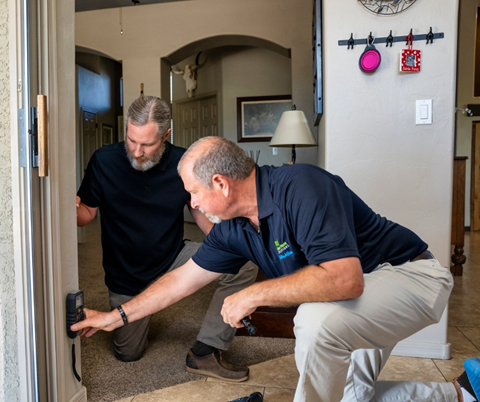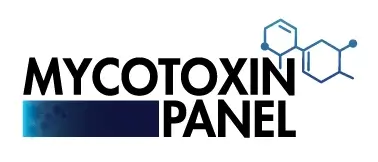Mycotoxin testing Services: A Key Element in Danger Management Methods
Wiki Article
The Necessity of Mycotoxin Testing in Agricultural Products to Make Certain Customer Security
The requirement of mycotoxin testing in agricultural products is a crucial aspect of public wellness and safety that necessitates extensive evaluation. Mycotoxins, toxic substances created by specific fungis, can penetrate various plants, leading to substantial wellness threats for consumers, such as cancer causing impacts and organ damages. Routine mycotoxin testing not only determines and eliminates infected products from the supply chain yet also guarantees conformity with safety criteria and improves customer count on. Understanding the techniques and advantages of such testing is crucial to completely appreciate its significance in safeguarding our food supply.Recognizing Mycotoxins
Mycotoxins, toxic additional metabolites created by particular fungi, present a significant risk to agricultural items and human health and wellness. These substances are created by various varieties of mold and mildews, such as Aspergillus, Fusarium, and Penicillium, which can pollute plants both pre- and post-harvest - Mycotoxin testing Services. One of the most typical mycotoxins consist of aflatoxins, ochratoxin A, fumonisins, zearalenone, and deoxynivalenol (DON)
Mycotoxin contamination can take place under particular ecological problems, such as high moisture and temperature level, which favor the growth of mold. Agricultural items like cereals, nuts, flavors, dried fruits, and coffee are specifically vulnerable. The visibility of mycotoxins in these products can cause significant financial losses as a result of minimized plant returns and the need for rigorous screening and decontamination procedures.
Comprehending the biochemical nature and formation of mycotoxins is necessary for establishing reliable mitigation techniques. Study has shown that mycotoxins exhibit a variety of chemical structures and residential properties, making detection and elimination challenging. Advanced analytical strategies, including chromatography and mass spectrometry, are used to identify and quantify mycotoxins in agricultural items, ensuring that contamination degrees continue to be within safe limitations developed by regulative bodies.
Wellness Risks of Mycotoxins
Offered the substantial dangers connected with mycotoxins in farming products, recognizing their effect on health and wellness is critical. Mycotoxins, toxic secondary metabolites created by fungis, position severe threats to both human and animal health. Persistent exposure, even at reduced degrees, can result in a series of unfavorable health and wellness impacts, consisting of immunosuppression, teratogenicity, and carcinogenicity. Aflatoxins, amongst the most well-known mycotoxins, are categorized as Group 1 health hazards by the International Agency for Study on Cancer Cells (IARC), mainly impacting the liver and raising the risk of hepatocellular carcinoma.Intense mycotoxin poisoning, although much less typical, can cause prompt and severe illness such as liver damage, intestinal disruptions, and hemorrhaging. Ochratoxin A, another powerful mycotoxin, is connected to kidney damages and has possible cancer causing results. On the other hand, fumonisins, mainly affecting maize, are connected with esophageal cancer cells and neural tube defects.

Common Resources of Contamination
Understanding the typical resources of contamination is critical for properly taking care of and reducing the risks positioned by mycotoxins. Mycotoxins are harmful secondary metabolites produced by certain sorts of fungis, which can infect agricultural items at different phases of manufacturing, handling, and storage. The key resources of contamination consist of area problems, post-harvest handling, and storage space environments.Field problems play a significant function, with variables like weather condition, plant vulnerability, and soil health and wellness influencing fungal growth. Crops such as corn, peanuts, wheat, and tree nuts are especially at risk to mycotoxin-producing fungis like Aspergillus, Fusarium, and Penicillium varieties. Inadequate crop turning and inadequate bug administration can worsen the risk of contamination.
Post-harvest handling is one more vital phase where contamination can take place. Mechanical damages during harvesting and transportation develops access factors for fungis, while incorrect drying out methods can leave dampness levels high enough to support fungal development.
Storage space atmospheres add significantly to contamination risks. Improperly kept storage facilities with high humidity and temperature level degrees develop optimal problems for mycotoxin manufacturing. Normal assessments and proper storage space conditions are essential in curbing this threat.
Mycotoxin Examining Techniques
Efficient management of mycotoxin contamination pivots not only on recognizing possible resources but additionally on carrying out robust testing approaches to find these hazardous substances. Mycotoxin testing techniques can be broadly categorized right into immunochemical and chromatographic strategies. High-performance liquid chromatography (HPLC) and gas chromatography-mass spectrometry (GC-MS) stand for advanced chromatographic techniques recognized for their high sensitivity and precision. These methods are experienced at measuring numerous mycotoxins in intricate matrices, making them vital for extensive analysis.On the other hand, enzyme-linked immunosorbent assay (ELISA) and lateral circulation assays are noticeable immunochemical methods. ELISA, particularly, is widely utilized due to its cost-effectiveness, simplicity of usage, and fast turn-around time. Side circulation assays give fast, on-site testing capabilities, making them suitable for field applications where immediate decisions are essential.
Furthermore, improvements in molecular biology have actually introduced PCR-based techniques efficient in finding mycotoxin-producing fungis at hereditary degrees, supplying a predictive approach to contamination risk. Integrating these varied approaches boosts the dependability and comprehensiveness of mycotoxin discovery, making sure that farming items fulfill security requirements and protecting consumers from prospective wellness dangers.
Benefits of Regular Evaluating
her explanation
Routine Click This Link mycotoxin screening uses considerable advantages that significantly strengthen agricultural safety and top quality. One of the main benefits is the protection of customer health. Mycotoxins, hazardous substances produced by specific fungis, can infect food and present serious health and wellness threats, including cancer and acute poisoning. Regular screening makes sure that infected products do not reach consumers, thereby alleviating carcinogen.
Moreover, constant screening aids in keeping the honesty and track record of agricultural producers. By rigorously checking and regulating mycotoxin levels, producers can stay clear of pricey recalls and lawful effects. This not just ensures conformity with rigorous worldwide safety and security criteria yet likewise promotes consumer trust and loyalty.

Verdict
The requirement of mycotoxin testing in farming items is emphasized by the substantial health and wellness risks posed by these toxic substances. It boosts the track record of manufacturers and promotes depend on within the agricultural supply chain, ultimately guarding their explanation public health.The necessity of mycotoxin screening in agricultural items is a critical facet of public health and wellness and security that warrants thorough exam. Mycotoxins, hazardous substances produced by particular fungi, can penetrate different plants, leading to considerable health and wellness threats for consumers, such as carcinogenic impacts and organ damage.Mycotoxins, hazardous secondary metabolites generated by certain fungis, provide a considerable risk to farming items and human health and wellness.Offered the significant threats linked with mycotoxins in farming products, recognizing their effect on wellness is vital (Mycotoxin testing Services).The need of mycotoxin testing in farming items is underscored by the substantial health dangers posed by these hazardous substances
Report this wiki page